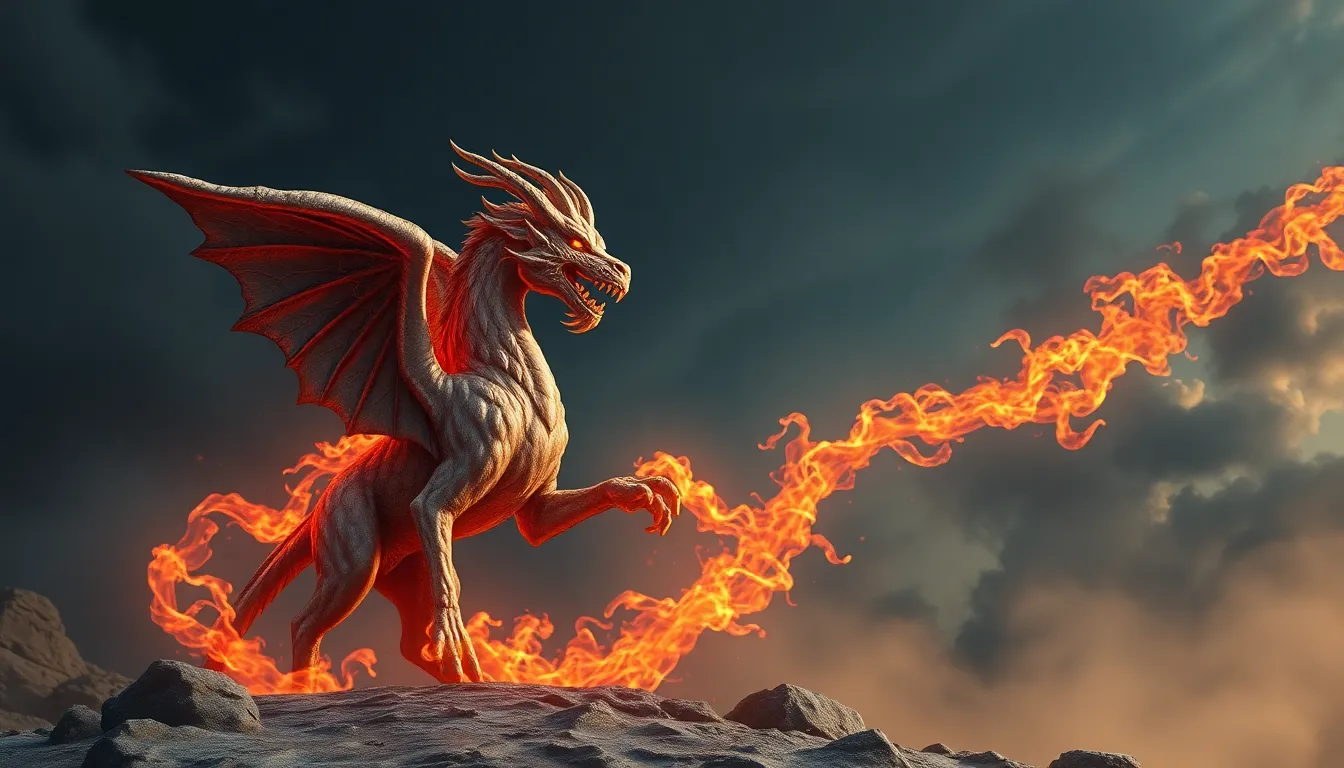The Chimera’s Role in Greek Tragedy: Themes of Conflict and Resolution
I. Introduction
The Chimera, a fire-breathing creature from Greek mythology, is often depicted as a monstrous hybrid with the body of a lion, the head of a goat, and a serpent for a tail. This fearsome beast symbolizes not only the physical manifestation of conflict but also the deeper struggles within the human psyche. Greek tragedy, a dramatic art form that explores profound themes of human experience, serves as a perfect backdrop for examining such symbols. The Chimera embodies the inherent conflicts in human nature and the quest for resolution that resonates throughout Greek tragedies.
II. The Mythological Background of the Chimera
The Chimera is described as a hybrid creature, fearsome and powerful, born from the union of the monstrous Typhon and Echidna. According to legend, it wreaked havoc in Lycia until it was slain by the hero Bellerophon, who rode the winged horse Pegasus. The Chimera’s place within Greek mythology is significant, representing chaos and the fight against insurmountable odds.
In comparison to other mythological creatures, such as the Sphinx or the Minotaur, the Chimera stands out due to its multifaceted nature. Each creature symbolizes different aspects of human fears and societal conflicts:
- Sphinx: Represents the riddle of existence and the quest for knowledge.
- Minotaur: Embodies the struggle between civilization and barbarism.
In contrast, the Chimera symbolizes the internal and external conflicts that define the human experience, making it a powerful emblem in the world of Greek tragedies.
III. Chimera as a Symbol of Conflict
The Chimera’s very nature embodies duality and contradiction. As a creature made of different animals, it reflects the complexities of human emotions and the conflicts that arise from them. In Greek tragedies, characters often face both internal and external conflicts that mirror the Chimera’s multifaceted representation.
For example, in plays like The Bacchae and Oedipus Rex, the characters confront their own inner demons and societal pressures, resembling the struggle against the Chimera:
- The Bacchae: Pentheus’s denial of his own nature leads to his tragic downfall, as he battles against the primal aspects represented by Dionysus, much like facing the Chimera.
- Oedipus Rex: Oedipus’s quest for truth leads him to confront the monstrous realities of his own life, paralleling the conflict inherent in the Chimera.
IV. Chimera in Tragic Heroes’ Journeys
The Chimera’s influence extends to the development of tragic heroes within Greek tragedies. These heroes often grapple with their own “Chimeras,” representing their fears, desires, and moral dilemmas. The journey of self-discovery and confrontation is a common theme in these narratives.
Some notable case studies include:
- Oedipus: His search for identity leads him to confront the horrific truth of his origins, symbolizing the internal conflict of the Chimera.
- Agamemnon: His return home after the Trojan War is fraught with inner turmoil and external pressures, akin to battling a Chimera.
These tragic heroes illustrate the relationship between personal struggles and the Chimera archetype, showcasing how conflict drives character development.
V. Themes of Resolution and Transformation
The Chimera also embodies the struggle for resolution within Greek tragedies. The process of transformation often follows conflict resolution, wherein characters either overcome their Chimeras or succumb to their chaos. This theme resonates deeply within the tragic narrative.
In some tragedies, resolution is achieved through moments of self-realization:
- In Oedipus Rex, Oedipus’s acceptance of his fate leads to a tragic catharsis, transforming his understanding of truth and destiny.
- In The Bacchae, the characters’ eventual acceptance of their primal instincts leads to a tragic yet transformative resolution.
However, resolution is not always achieved. The struggle against the Chimera can result in failure, as seen in tragic endings that highlight the futility of escaping one’s nature.
VI. The Role of Fate and Free Will in Relation to the Chimera
The interplay of fate and free will is a recurring theme in stories involving the Chimera. Characters often grapple with predetermined destinies while attempting to assert their choices, raising philosophical questions about control and consequence.
In the context of the Chimera, characters’ decisions are influenced by their battles with their inner monsters:
- Oedipus’s tragic fate is intertwined with his choices, leading to catastrophic outcomes.
- Pentheus’s refusal to acknowledge his true nature results in his demise at the hands of his mother and the Bacchae.
This dichotomy of fate versus choice invites audiences to reflect on the implications of their own struggles and choices in life.
VII. The Chimera’s Influence on Later Literary Works
The legacy of the Chimera extends beyond ancient Greek tragedy, influencing subsequent literature and art. From the Renaissance to modern storytelling, the Chimera’s themes of conflict and resolution resonate with audiences across cultures.
Examples of its influence include:
- Literature: Many authors have utilized the Chimera as a metaphor for the complexities of human nature, such as in works by Mary Shelley and Franz Kafka.
- Art: The Chimera has inspired countless artistic representations that explore the dualities of existence.
Moreover, comparative analysis reveals similar monstrous representations in other cultures, illustrating a universal exploration of conflict and identity.
VIII. Conclusion
In conclusion, the Chimera plays a pivotal role in Greek tragedy, symbolizing the multifaceted conflicts inherent in human nature. Through its representation of chaos, duality, and the struggle for resolution, the Chimera serves as a powerful archetype that resonates throughout the tragic narratives of ancient Greece.
Reflecting on the themes of conflict and resolution, we find that the Chimera’s relevance persists in both ancient and contemporary narratives, reminding us of the ongoing struggle within ourselves and the world around us.




